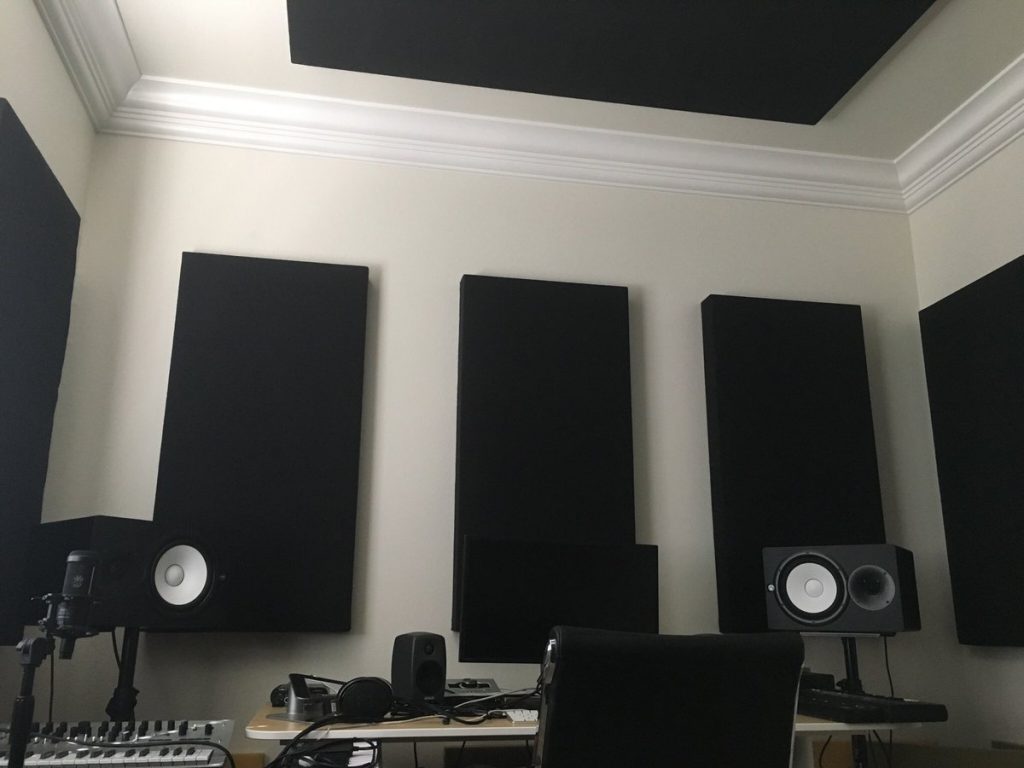

Acoustic panels are a must for any music studio as they will improve recording quality. However, there is a right and wrong way of fixing Acoustic foam. The best way to assess the number and type of panels you will require will be determined by the size of your room.
Smaller studios will need more sound absorption as sound waves will bounce faster in a compact space, resulting in harsh ringing tones. On the other hand, larger rooms with higher ceilings, have less vibration and will need fewer panels.
To understand the dimensions of your room, you will need to do a “clap test”. To do this test, clap while walking around the room and listen for echoes. If your claps sound harsh or big (like in a cave), you will require more panels. You could also play an instrument and listen to the sound. Treatments will reduce the sound refection to allow the sound to move directly into your mic and improve recording quality.
You should add your panels after you have hung your bass traps. The bass traps will absorb lower frequencies, while the panels will absorb mid-high frequencies. Reverberations are most common in the corners of a room, for example where the wall meets the ceiling or another wall. Fix your panels along the corners leaving a two-finger gap between the corner and the panel to keep some of the room’s bass. Once the corners are complete, you can place panels on the walls.
The Foam Factory offers a wide range of acoustic panels to suit your requirements. Their online website offers step-by-step instructions on how to choose, measure, and fix your acoustic panels, which can result in better recording quality.






